Bringing the beauty of nature indoors through thoughtfully crafted plant arrangements can transform any living space into a serene oasis. Whether you’re just beginning your gardening journey or have years of experience cultivating lush landscapes, creating captivating plant displays is a rewarding endeavor that combines creativity with nature’s charm.
For beginners, the world of plant arrangements offers a delightful entryway to gardening, allowing you to explore different textures, colors, and forms without feeling overwhelmed. Experienced gardeners, on the other hand, can find joy in experimenting with new combinations and challenging their green thumbs with intricate designs that showcase their skills.
In this article, you’ll discover practical tips and inspiring ideas to help you craft stunning plant arrangements that suit both your personal style and the unique needs of your home. From selecting the right plants and containers to mastering the art of arrangement, we aim to make the process accessible and enjoyable for everyone. Embrace the beauty of indoor gardening and learn how to create living masterpieces that bring a sense of tranquility and vibrancy to your everyday life.
Choosing Stylish Indoor Planters
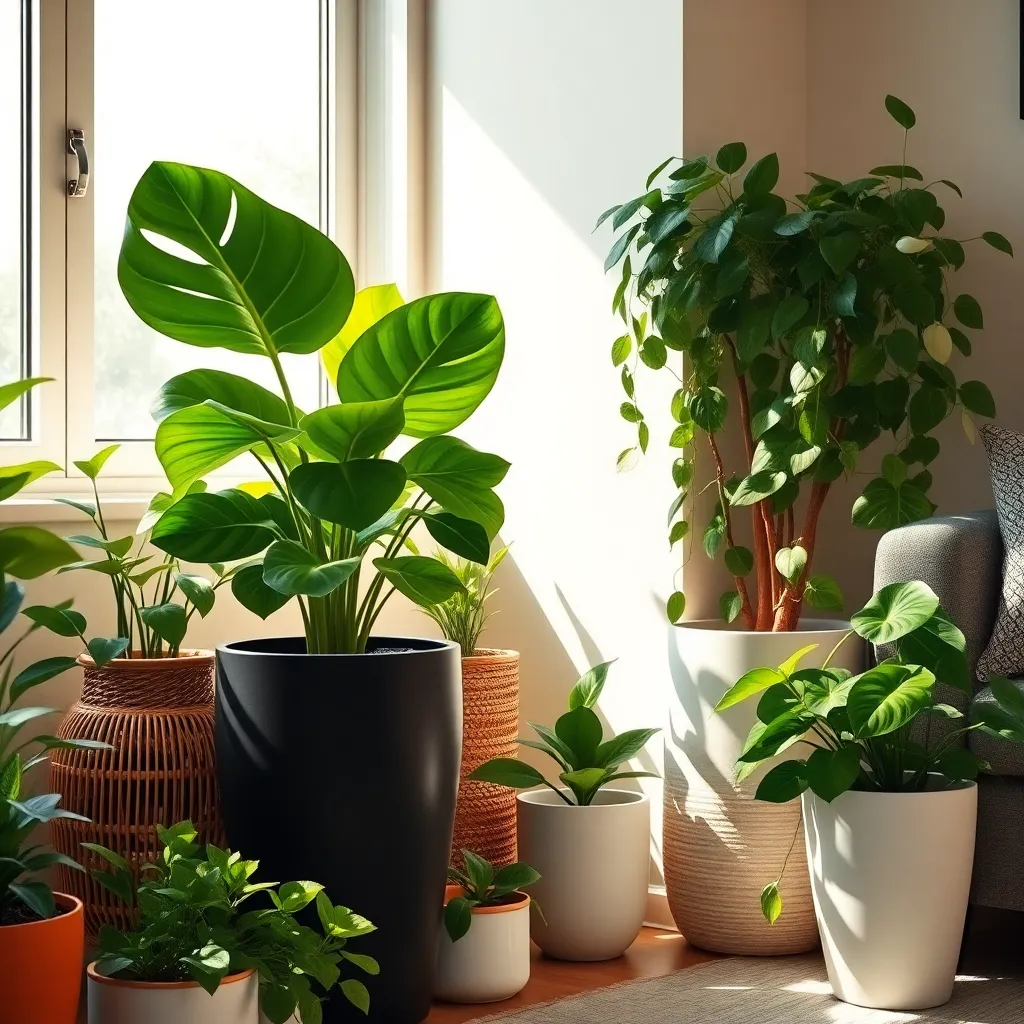
When selecting indoor planters, consider both style and functionality to complement your home decor. Opt for planters with drainage holes to prevent overwatering, as this is a common mistake for indoor plants.
Materials like ceramic, terracotta, and metal each offer distinct aesthetics; however, they also require different care. For example, terracotta is porous and helps prevent root rot, while ceramic can hold more moisture, making it ideal for plants that prefer damp soil.
Size is crucial; ensure the planter is large enough to allow for root growth but not so large that excess soil stays too wet. A good rule of thumb is to choose a planter that’s one to two inches larger in diameter than the plant’s current pot.
For those looking to add a touch of elegance, consider planters with stands or those that hang, adding vertical interest to your space. Grouping different heights and styles can create a dynamic display, perfect for showcasing a variety of plants in one area.
Perfect Plants for Every Room
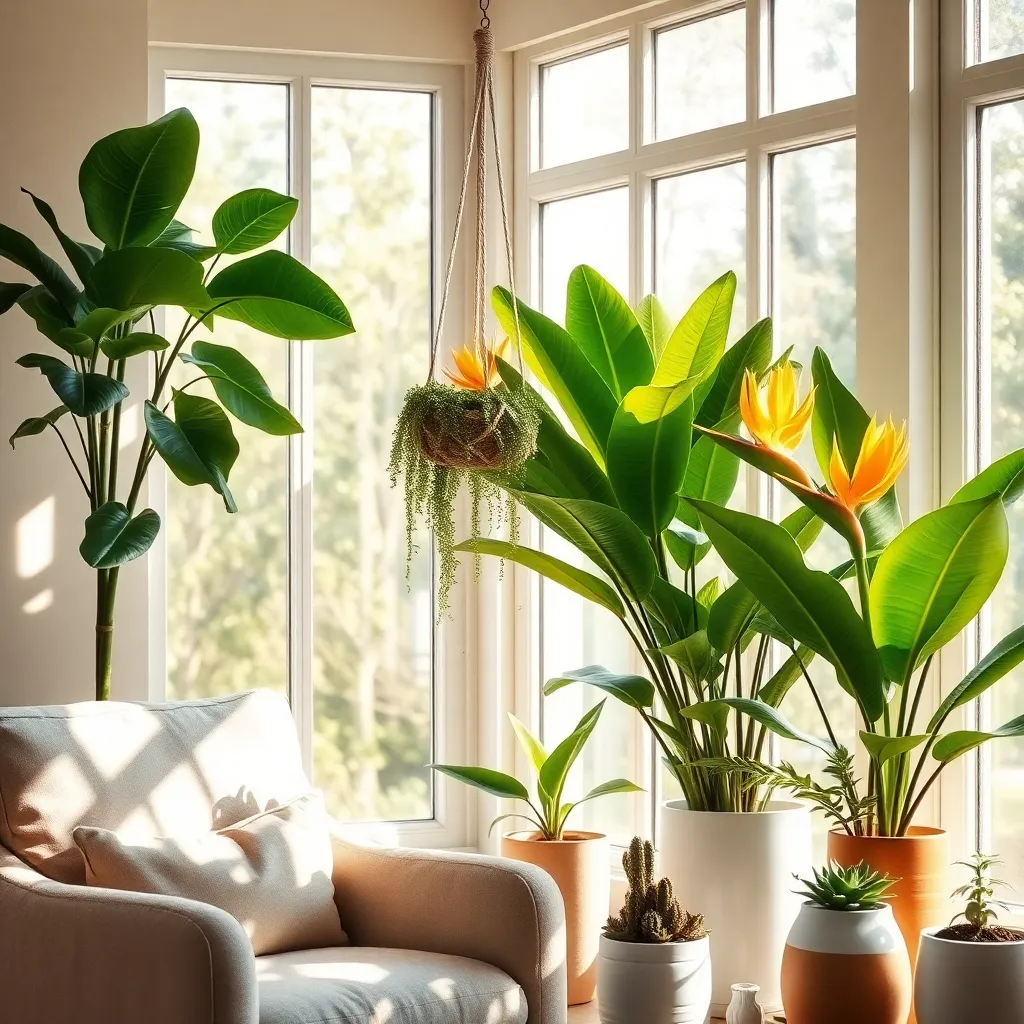
Creating the perfect plant arrangement for each room begins with understanding the unique conditions of your space. Consider light availability, humidity levels, and room temperature to choose plants that will thrive.
In a bright, sunny living room, plants like succulents, snake plants, and fiddle leaf figs are ideal choices. These plants thrive in bright, indirect light and can tolerate occasional watering, making them perfect for busy gardeners.
For the kitchen, herbs such as basil, mint, and rosemary not only add greenery but also provide fresh ingredients for cooking. They require a sunny windowsill and regular watering to keep their leaves lush and aromatic.
Bathrooms with high humidity are perfect for ferns and peace lilies. These plants love moisture and can handle the lower light conditions often found in bathrooms, making them easy to maintain.
In bedrooms, consider low-maintenance plants like pothos and ZZ plants that are known for improving air quality. These plants thrive in low light and require minimal watering, ensuring a restful environment.
Advanced gardeners might experiment with grouping plants by similar water and light needs for a stunning visual effect. This approach not only enhances the aesthetic appeal but also simplifies the care routine, making plant maintenance more efficient.
Creating Eye-Catching Plant Displays
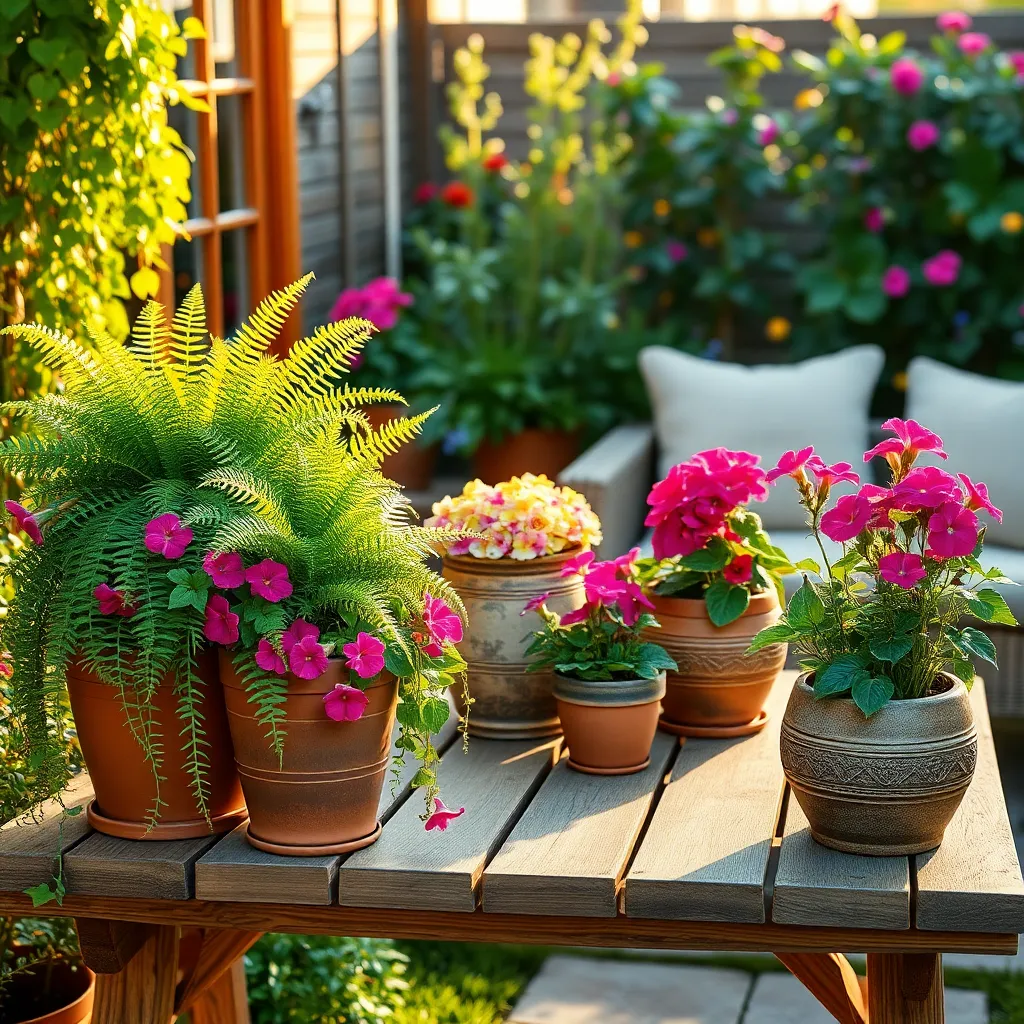
Creating eye-catching plant displays can transform any room into a vibrant, living space. Start by selecting a variety of plants with different textures, colors, and heights to create visual interest and dimension.
Consider using a mix of leafy greens, flowering plants, and succulents to add diversity to your arrangement. Position taller plants like snake plants at the back, while shorter ones like succulents can be placed upfront for depth.
Choosing the right container is crucial for both aesthetics and plant health. Ensure your pots have drainage holes to prevent waterlogging, and use a high-quality potting mix suited to your specific plant types.
Watering needs will vary depending on the plants you select, so it’s important to tailor your care routine. For instance, succulents prefer less frequent watering, while ferns thrive with consistently moist soil.
Advanced gardeners might consider incorporating a layering technique by placing moss or decorative stones on the soil surface. This not only enhances the display but also helps retain moisture and reduces soil displacement during watering.
Lighting is another critical aspect of creating stunning indoor plant arrangements. Most indoor plants prefer bright, indirect light, so place your display near a window with filtered sunlight for optimal growth.
Maintaining Plant Health Indoors
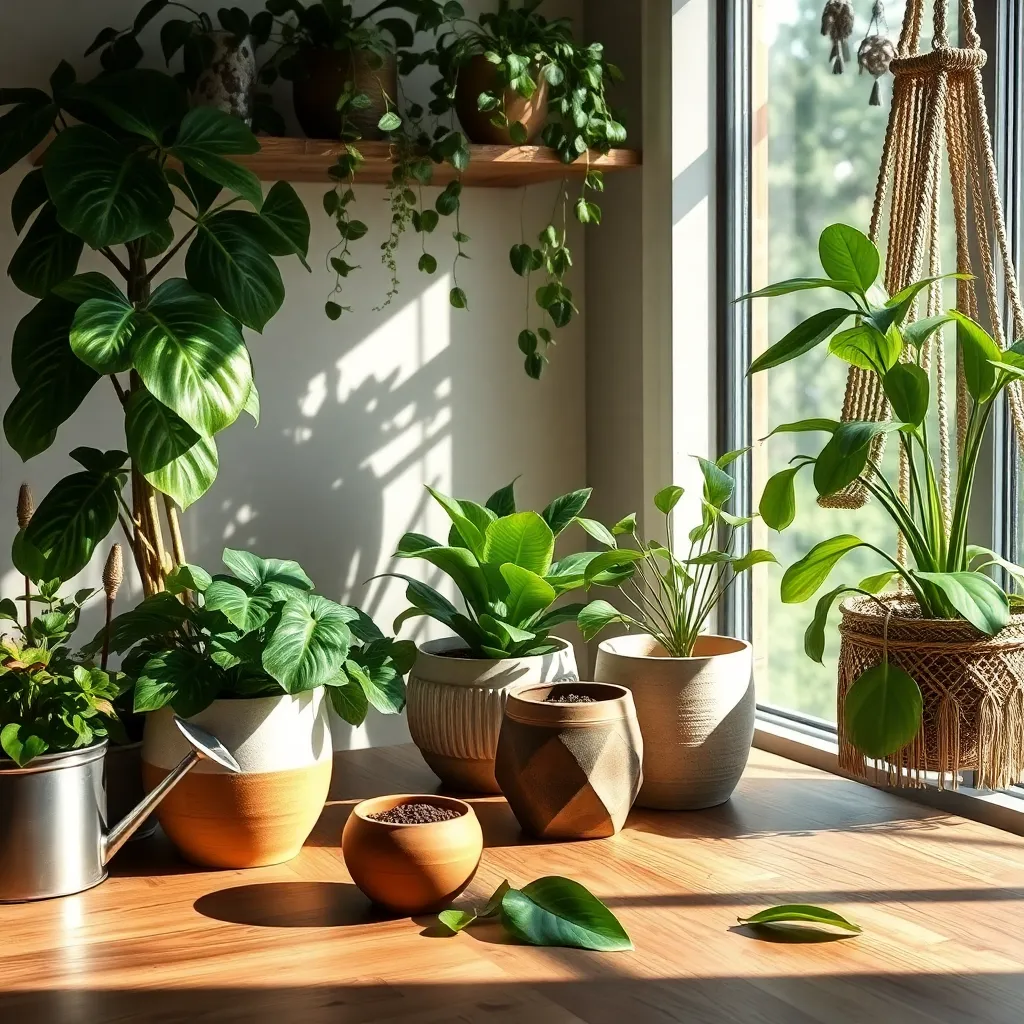
Maintaining plant health indoors involves understanding the specific needs of each plant species. Begin by ensuring that your plants are in the right type of soil; for instance, succulents require well-draining cactus soil, while ferns thrive in a peat-based mix.
Lighting is another crucial factor in indoor plant health. Place light-loving plants like aloe vera and jade near windows that receive bright, indirect sunlight, but remember that shade-tolerant varieties such as pothos can do well in lower light conditions.
Watering is a common challenge for indoor gardeners. As a general rule, allow the top inch of soil to dry out before watering most houseplants, but be sure to check specific requirements for each species to avoid over or under-watering.
Humidity levels are vital, especially for tropical plants like orchids and peace lilies. Consider using a humidity tray or a small humidifier to maintain moisture levels, ensuring your plants stay lush and healthy.
Advanced care may involve regular pruning and fertilizing. Trim dead or yellowing leaves to promote growth and apply a balanced, water-soluble fertilizer every month during the growing season to provide essential nutrients.
Seasonal Arrangement Inspirations
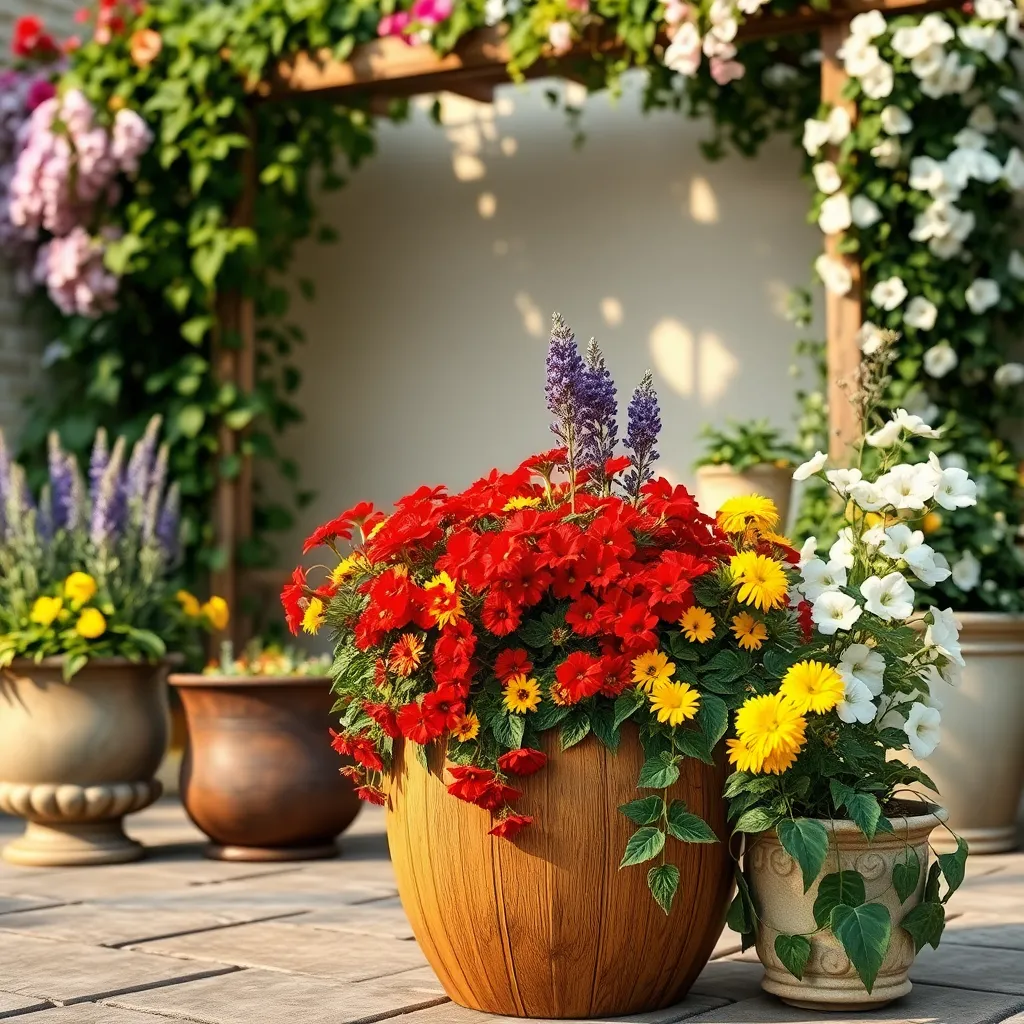
Seasonal plant arrangements offer a wonderful opportunity to bring the beauty of each season into your home. To create a captivating autumn display, consider using a mix of chrysanthemums and ornamental grasses, which thrive in cooler temperatures and add vibrant hues to your arrangement.
Incorporate plants with contrasting textures to enhance visual interest. For example, pairing the smooth, glossy leaves of a rubber plant with the feathery fronds of a fern can create a dynamic display that draws the eye.
During winter, indoor arrangements can benefit from the use of evergreens like Norfolk Island pine, which provides a lush, green backdrop. To add a festive touch, intersperse with poinsettias, ensuring they receive bright, indirect light and moderate watering to maintain their vivid color.
Spring arrangements can be brought to life with the inclusion of bulbs such as hyacinths or daffodils. These plants require well-draining soil and benefit from a balanced liquid fertilizer to encourage robust blooms.
Summer displays thrive with sun-loving plants like succulents and geraniums, which require less frequent watering but plenty of sunlight. Consider using a cactus mix for your succulents to ensure proper drainage and prevent root rot.
Conclusion: Growing Success with These Plants
In exploring the vibrant world of plant arrangements for your home, we’ve unearthed five key relationship concepts that can flourish alongside your greenery. First, the importance of communication parallels the need for understanding plant care—both require attentiveness and openness. Second, balance in relationships mirrors the harmony found in mixed plant arrangements, where diversity fosters beauty. Third, the growth mindset is vital, just as nurturing plants encourages growth, so does encouraging each other’s personal development. Fourth, resilience is key; like hardy plants that withstand storms, strong relationships endure challenges. Lastly, creating shared spaces, whether a cozy plant nook or meaningful experiences, reinforces connection.
As an actionable next step, choose a plant arrangement that symbolizes an aspect of your relationship you’d like to nurture. Reflecting on its growth can serve as a reminder of your relationship’s potential.
Bookmark this article as a handy guide for when you need a refreshing perspective on nurturing your connections. Remember, cultivating a thriving relationship is an ongoing journey, much like tending to a garden. By taking conscious steps today, you lay the groundwork for a future where your relationships bloom beautifully and resiliently. Let’s grow together!

